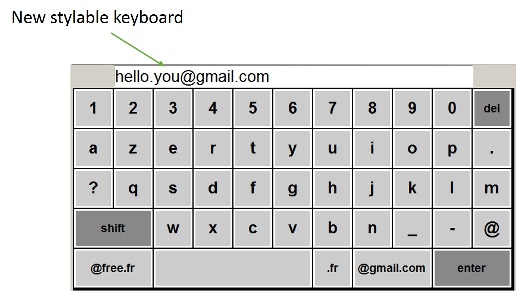Open Source Photobooth forked and improved from wyolum/TouchSelfie
For hardware construction, see Make Magazine article
Installing (extracted and adapted from Make Magazine)
# update system
sudo apt-get update
# Install ImageTk, Image from PIL
sudo apt-get install python-imaging
sudo apt-get install python-imaging-tk
# Install google data api and upgrade it
sudo apt-get install python-gdata
sudo pip install --upgrade google-api-python-client
sudo pip install --upgrade oauth2client
# Install ImageMagick for the 'Animation' mode
sudo apt-get install imagemagick
# Install CUPS for the Printing function(optional)
sudo apt-get install cups
sudo apt-get install python-cups
# Setting up CUPS/printer(optional)
https://www.techradar.com/how-to/computing/how-to-turn-the-raspberry-pi-into-a-wireless-printer-server-1312717
Test device:
Canon Selphy CP1300 with the Canon SELPHY CP900 - CUPS+Gutenprint v5.2.11 driver over USB
If google chrome is not on your system, the following might be necessary:
sudo apt-get install luakit
sudo update-alternatives --config x-www-browser
- run
setup.shscript, this will:
- guide you through the feature selection (email feature, upload feature)
- Google credentials retrieval and installation
- Google Photos album selection
- and will create a
photobooth.shlauncher
setup.shcreates a configuration filescripts/configuration.json, you can edit this file to change configuration parameters, such as:
- the logo file to put on your pictures
- email subject and body
- wether or not to archive snapshots locally
- where to store pictures locally
- Optionally you can change lower-level configuration options in the file
scripts/constants.pysuch as:
- captured image sizes
- hardware dependent things
Changes from wyolum/TouchSelfie
- Now integrally based on OAuth2, neither the send-email, nor the upload-pictures will ask for and store a password
- Many faculty/company networks block the sendmail port. By using OAuth2 authentication, photobooth emails are seen as https connection and are not blocked by the network anymore
- a new
setup.shassistant will guide you through the configuration of the features you need (send_email, auto-upload) and will help you install the Google credentials. - credentials installation now points to a google-hosted wizard to simplify the application-id creation
- Added GPIO hardware interface for three buttons (with connections in hardware/ directory). Each button triggers a different effect. Software buttons are added if GPIO is not available
- A new 'print' button allows you to print selfies on a preconfigured printer (courtesy Pikokosan)
- Added "Animation" effect that produces animated gifs (needs imagemagick)
- Choose among
PiCamerabuiltin image effects for more creative snapshots
- supports new v2.1 pi camera
- Supports arbitrary resolution for snapshots (configure it in constants.py)
- Preview now uses images for countdown: be creative! see
constants.pyfor customizations. - Preview is now horizontally flipped which is consistent with cameraphone behaviors and your bathroom mirror. (Previous mode was confusing for users)
- Modern "black" userinterface with icon buttons
- New skinnable Touchscreen keyboard "mykb.py"
-
Removed configuration button to avoid pranks
- use
setup.shto setup credentials and setup Google Photo Album - tune configuration in
constants.py - limited runtime configuration (exit, enable/disable email and upload) is still possible via long press)
- use
-
snapshot display now supports animated gifs
-
Mail address logging available in configuration
- photobooth users can opt-out from the mail logging if activated
-
command line arguments to enable/disable some features:
- enable/disable fullscreen startup
- enable/disable email sending
- enable/disable auto-upload
- enable/disable hardware buttons support (on-screen buttons displayed instead)
- Use
python user_interface.py --helpfor a description of command line options
- During setup, you ask me to allow this application to access my email, the original TouchSelfie didn't do this, why?
The Original TouchSelfie script used to store you google account and password in a .credentials file.
Considering it was a security risk, I prefered to code an alternate email-sending procedure that wouldn't require your password to get things done.
This is achieved via OAuth2 mechanism that only requires that you accept (once) that this application can access to your email. This way is safer since there's no way for the application to do anything other than what you accepted it to do.
- Wait, I don't want email sending, but you still ask me to accept that!
To simplify the setup process, the setup assistant points you to a google credentials download page where email authorization is enabled by default. You can change this.
If you configured TouchSelfie to not send emails, you don't need to authorize access to your mail box, just change this during the credentials download process. This way, the application will only require basic authorization to your account.
- Will YOU have access to my emails?
No, but don't take my word!
This is the beauty of opensource: everybody can read the source code and check if it's harmfull. Plus, with Github, you can't hide anything: every versions of this code is archived and I can't delete them: you will always be able to verify that I didn't do anything harmfull in the past.
Maybe you don't have the competency to verify the sourcecode, but others have and I trust they will alert the world if they find something nasty (or just file an Issue!).
Hint for future verifyiers: the scripts/oaut2services.py contains all the code that accesses the Google Accounts. As you will see, there's no methods designed to read emails, only to send them.
- Why do I need to create a project on Google Developers? Can't you provide one?
Your Security and My Quota.
By retrieving yourself application credentials, you basically authorize yourself to access your own google account and you can revoke this whenever you want. Also, Application Credentials have a daily limit of free use, If I were to provide you my own credentials, a group of users would consume this quota in no time, leaving everybody with a bad experience.



